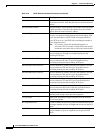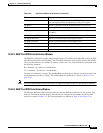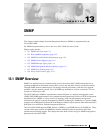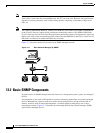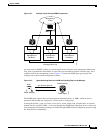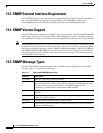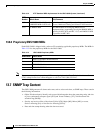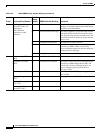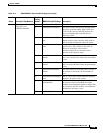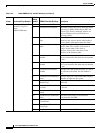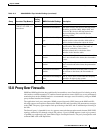
13-4
Cisco ONS 15600 Reference Manual, R7.2
Chapter 13 SNMP
13.3 SNMP External Interface Requirement
13.3 SNMP External Interface Requirement
Since all SNMP requests come from a third-party application, the only external interface requirement is
that a third-part SNMP client application can upload RFC 3273 SNMP MIB variables in the
etherStatsHighCapacityTable, etherHistoryHighCapacityTable, or mediaIndependentTable.
13.4 SNMP Version Support
The ONS 15600 supports SNMPv1 and SNMPv2c traps and get requests. The ONS 15600 SNMP MIBs
define alarms, traps, and status. Through SNMP, NMS applications can query a management agent for
data from functional entities such as Ethernet switches and SONET multiplexers using a supported MIB.
Note
ONS 15600 MIB files in the CiscoV1 and CiscoV2 directories are almost identical in content except for
the difference in 64-bit performance monitoring features. The CiscoV2 directory contains three MIBs
with 64-bit performance monitoring counters: CERENT-MSDWDM-MIB.mib, CERENT-FC-MIB.mib,
and CERENT-GENERIC-PM-MIB.mib. The CiscoV1 directory does not contain any 64-bit counters,
but it does support the lower and higher word values used in 64-bit counters. The two directories also
have somewhat different formats.
13.5 SNMP Message Types
The ONS 15600 SNMP agent communicates with an SNMP management application using SNMP
messages. Table 13-1 describes these messages.
Table 13-1 ONS 15600 SNMP Message Types
Operation Description
get-request Retrieves a value from a specific variable.
get-next-request Retrieves the value following the named variable; this operation is often used to
retrieve variables from within a table. With this operation, an SNMP manager does
not need to know the exact variable name. The SNMP manager searches
sequentially to find the needed variable from within the MIB.
get-response Replies to a get-request, get-next-request, get-bulk-request, or set-request sent by
an NMS.
get-bulk-request Fills the get-response with up to the max-repetition number of get-next interactions,
similar to a get-next-request.
set-request Provides remote network monitoring (RMON) MIB.
trap Indicates that an event has occurred. An unsolicited message is sent by an SNMP
agent to an SNMP manager.



